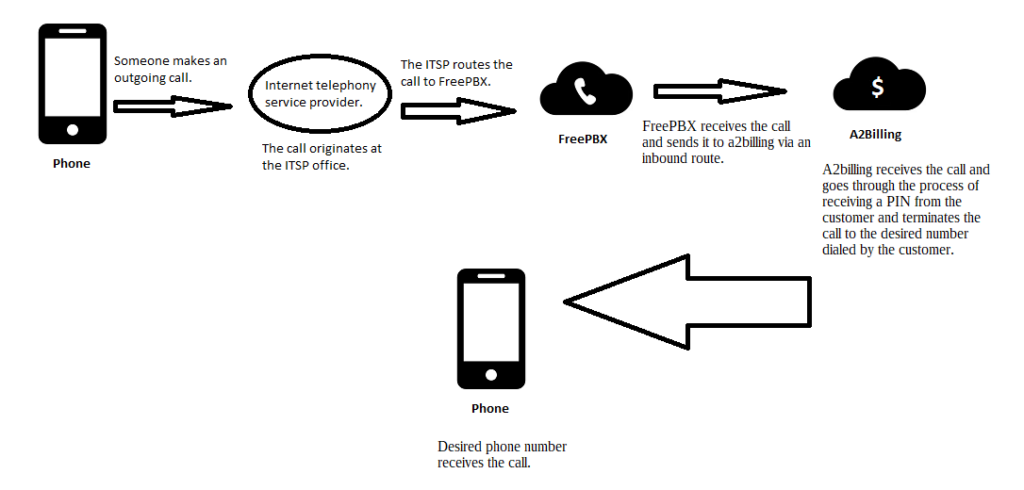This blog post will explain what SIP termination and origination is. SIP termination and origination are two separate services. VoIP calls using SIP have two endpoints. SIP termination is the process of sending outgoing calls to a PSTN or VoIP provider. SIP trunks are used to to send outgoing calls. SIP origination is the process of receiving an incoming call and sending it to its destination. An SIP provider receives an incoming call to your DID and sends it to your system. Incoming and outgoing calls on private branch exchange need a line or channel to travel through. Line and channel have the same definition. Sometimes those terms are used interchangeably. A SIP trunk acts as a container for lines or channels. A good example of SIP termination and origination is enabling calling card services. The image below shows how VoIP calling cards work.

Calling cards can use VoIP technology to allow someone to place outgoing calls to international phone numbers. Outgoing calls made using a calling card are way less cheaper than traditional phone services. Prepaid calling cards come with a set amount of calling minutes that can be used to place international calls. To place a call, dial the access number on the card. After that, the PIN would have to be entered at the voice prompt. The last step is to dial the number you wish to call. After the call is done, minutes are deducted from the balance on the card. For example, a phone system like freepbx can be used to route incoming calls via a DID to a2billing. Then a2billing uses an SIP trunk to send an outgoing call to the desired phone number.